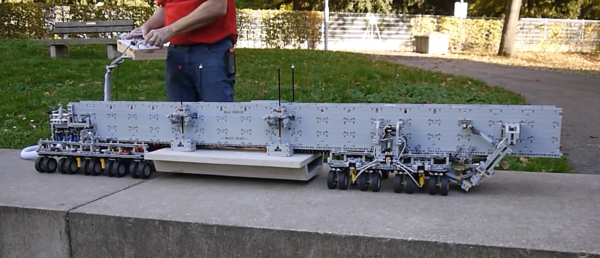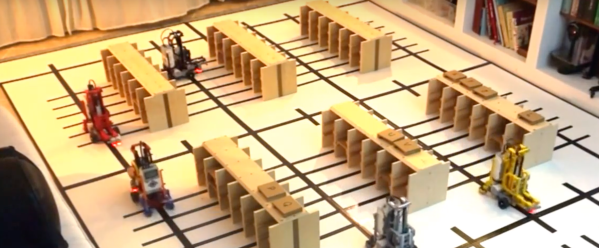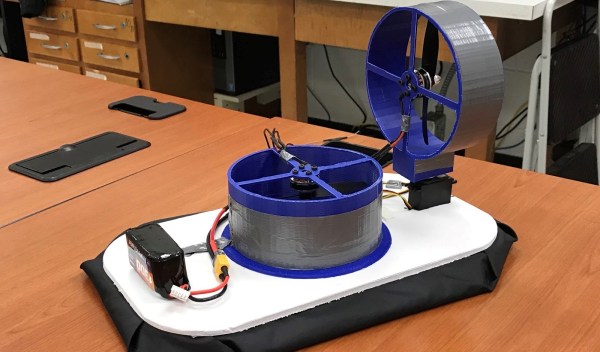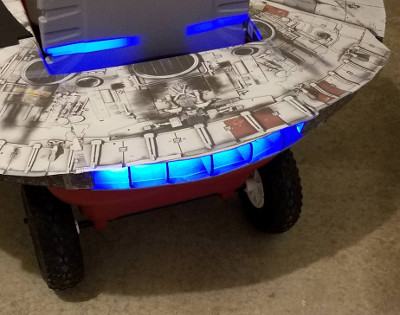There is definitely a passion for detail and accuracy among LEGO builders who re-create recognizable real-world elements such as specific car models and famous buildings. However, Technic builders take it to a level the regular AFOLs cannot: Not only must their model look like the original, it has to function the same way. Case in point, [Wolf Zipp]’s version of a massive bridge-building rig. The Chinese-built SLJ900 rolls along the tops of bridges and adds ginormous concrete spans with the aplomb found only in sped-up YouTube videos. It is nevertheless a badass robot and a worthy target for Technicization.
[Wolf]’s model is 2 meters long and weighs 10.5kg, consisting of 13 LEGO motors and a pneumatic rig, all run by a handheld control box. The rig inserts LEGO connectors to a simulated bridge span, lifts it up, moves it over the next pier, then drops it down into place. The span weighs 2.5kg by itself — that ain’t no styrofoam! There are a lot of cool details in the project. For instance, the mechanism that turns the wheels for lateral movement consists of a LEGO-built pneumatic compressor that trips pneumatic actuators that lift the wheels off the ground and allows them to turn 90 degrees.
Sometimes it blows the mind what can be built with Technic. Check out this rope-braiding machine and this 7-segment display we’ve posted. Continue reading “Functioning Technic SLJ900 Bridge Builder”


















